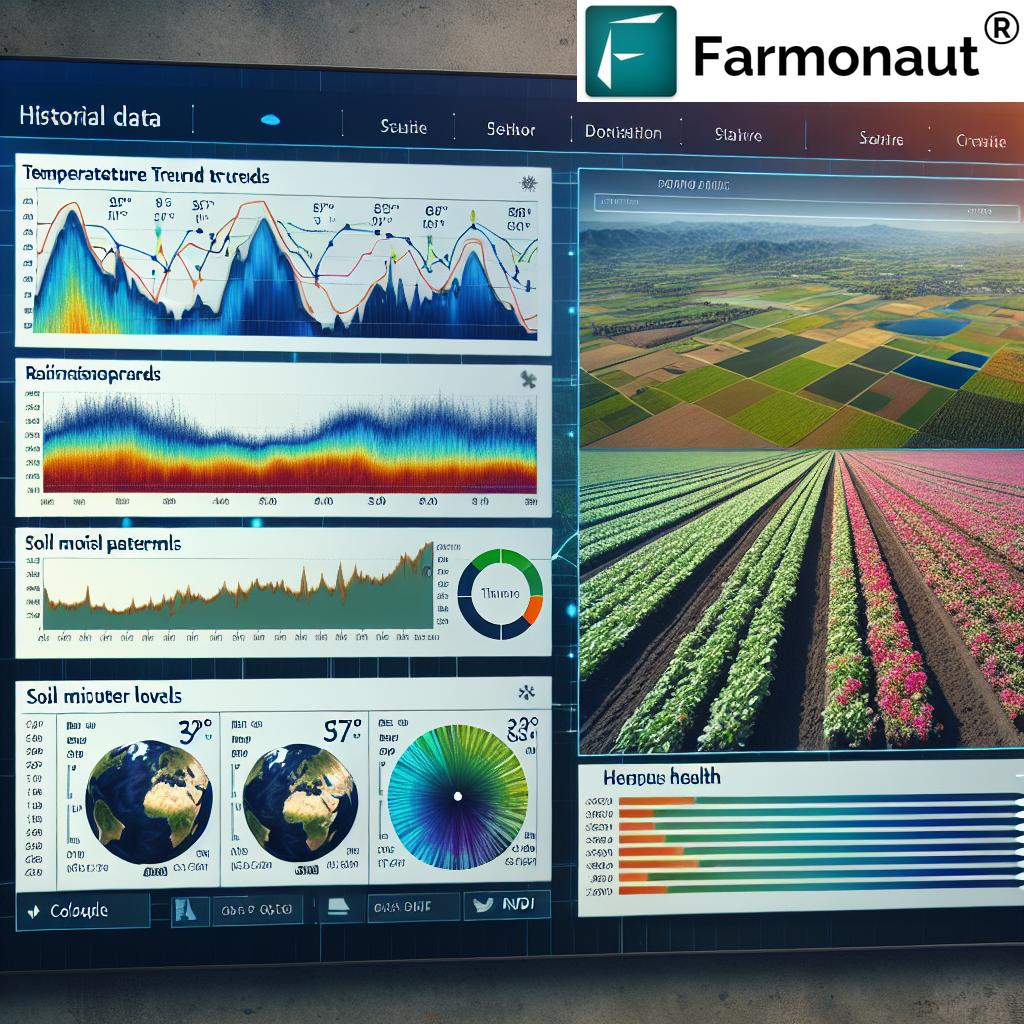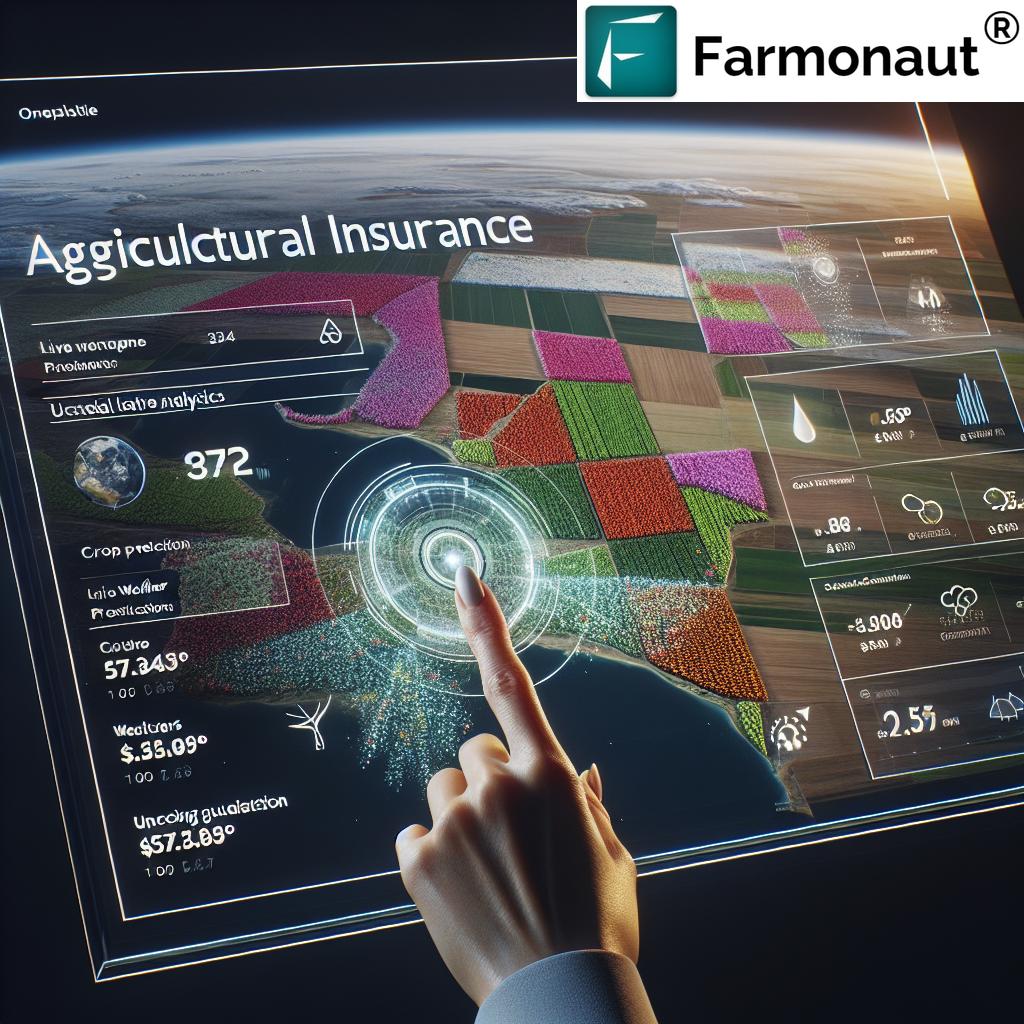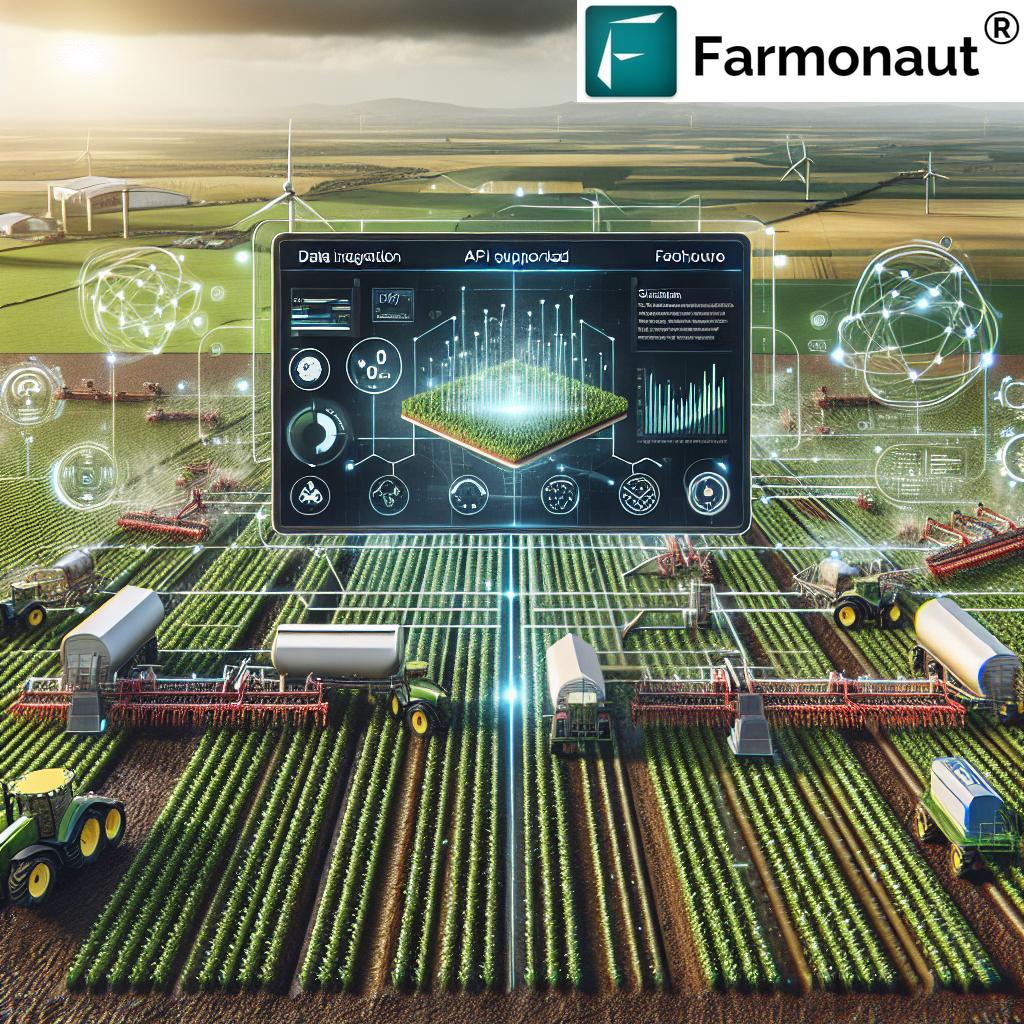Best Agriculture API & Farming API: Boost Yields 2025
“Over 70% of top farms in 2025 will use agriculture APIs for real-time crop monitoring and yield prediction.”
Overview: The Best Agriculture API & Farming API Landscape in 2025
The best agriculture API and farming API are defining the future of 2025 agriculture. Data, connectivity, and intelligent software are now at the heart of farming, making every aspect of agricultural operations more efficient, sustainable, and profitable. With precision solutions and digital integration, we can help farmers tap into real-time crop health, market prices, weather forecasts, and resource optimization—all powered by the latest API technology.
Application Programming Interfaces—or APIs—in agriculture enable platforms, apps, and machinery to communicate and seamlessly share data. By connecting diverse digital sources, these APIs provide actionable insights that optimize everything from irrigation to crop disease detection to supply chain transparency.
2025 marks a turning point: As global challenges such as climate variability, soil resource management, and the need for higher yields intensify, the best agriculture APIs and farming APIs have become pivotal tools for farmers, agronomists, agritech developers, and farm managers aiming to maximize productivity. This comprehensive guide explores the rise of API farming, tech advancements, and the best platforms transforming global agriculture.
Understanding Agriculture APIs: Importance for Farming
At the heart of modern agritech, an agriculture API is a set of protocols or rules allowing software systems and applications in agriculture to communicate and share data seamlessly. This integration allows for real-time access to datasets like climate forecasts, soil moisture, crop health, pest and disease alerts, and even satellite imagery.
- APIs provide granular access to information such as weather data, disease outbreaks, soil nutrient levels, and precise field conditions.
- By combining multiple data streams, APIs create a comprehensive, up-to-the-minute dashboard for smart farming decisions.
- Developers and agronomists use APIs to create innovative solutions that help farmers boost yields, lower input usage, and anticipate challenges.
- APIs enhance decision-making across the farm, from irrigation schedules to marketplace connections.
Many best agriculture APIs go beyond data sharing, enabling diverse platforms—like weather apps, satellite crop monitoring tools, and farm machinery automation—to interconnect. This digital synergy helps harness the full potential of smart devices, large-scale sensors, and cloud computing for data-driven, actionable intelligence.
Why API Farming Is Transforming 2025 Agriculture
The landscape of farming in 2025 is enabled by the rise of API farming—the strategic use of APIs to bind together every digital facet of agriculture. By connecting satellite imagery, smart sensors, drones, farm machinery, and digital dashboards, APIs empower farmers to optimize resources, minimize risks, and maximize every hectare’s output.
The Key Advantages of the Best Agriculture API in 2025
- Resource Optimization: Precise soil moisture and nutrient data enables farmers to tailor irrigation and fertilization schedules—saving water, reducing fertilizer waste, and enhancing sustainability.
- Crop Health, Disease & Pest Monitoring: Real-time satellite imagery and AI-powered analytics accessed via farming APIs allow early detection of crop stress, pest infestations, and disease outbreaks in the field.
- Forecasting & Risk Mitigation: Weather APIs provide up-to-date climate forecasts, help in planting/harvesting plans, and minimize losses from adverse weather conditions or sudden climate variability.
- Marketplace Integration & Supply Chain Transparency: APIs link farmers directly with buyers through digital marketplaces, support blockchain-based traceability, and streamline inventory management—helping farmers get fair prices and improve food safety.
- Actionable Insights: By tapping into extensive data streams, APIs equip farmers with immediate, fact-based intelligence for every key decision on the farm.
How API Farming Streamlines Multiple Operations
- Enables integration of data from satellite, climate, soil sensors, and agricultural machinery within one dashboard or digital platform.
- Makes workflows more efficient, scalable, and sustainable—from field-level management to national food supply planning.
- Provides smart, location-specific alerts for everything from soil moisture status to incoming weather to pest and disease outbreaks.
- Accelerates agritech innovation for developers, agronomists, and technology companies by enabling rapid deployment of new solutions.
The best agriculture API is not just about collecting data—it’s about transforming that data into actionable, easy-to-use intelligence that helps every user from a small farmer to a large agriculture enterprise.
“By 2025, farming APIs process more than 1 million satellite data points daily for precision agriculture insights.”
Leading Agriculture APIs & Apps in 2025
2025’s best agriculture APIs are trusted by agritech startups, farmers, research institutions, and large farm managers alike. The most impactful categories of agriculture APIs include:
- Climate and Weather APIs: Hyper-local weather forecasts from platforms like Tomorrow.io and Climacell revolutionize irrigation scheduling, frost protection, and risk mitigation.
- Satellite and Remote Sensing APIs: Satellite imagery APIs—e.g., Farmonaut, Planet Labs, Sentinel Hub—deliver accurate multispectral images for crop health monitoring, soil mapping, vegetation indices (NDVI), field boundaries, and growth analytics.
- Soil and Crop Data APIs: APIs such as Taranis, Farmonaut, and FarmLogs scan multispectral data and field sensors to provide soil nutrient, moisture, crop stress, and disease alerts.
- Market, Blockchain, and Traceability APIs: AgriDigital and blockchain-enabled APIs ensure secure transactions, transparent payment verification, food traceability, and direct buyer-seller engagement.
- Integrated Farm Management Apps: Platforms like Granular, CropIn, and Farmonaut combine data feeds into one smart dashboard overseen by AI for field activities, compliance, and resource tracking.
These APIs and best agriculture apps allow users to:
- Monitor their fields and crop health using high-resolution satellite imagery.
- Get weather predictions and soil condition updates to make precise decisions.
- Detect pests, disease outbreaks, and nutrient deficiencies early with automated alerts and actionable, AI-generated recommendations.
- Manage on-farm resources, machinery, and logistics efficiently through IoT and blockchain integration.
A standout example is the Farmonaut Satellite & Weather API, which provides developers and businesses with real-time, multispectral satellite imagery, weather insights, field health data (NDVI, NDWI), and crop stress alerts via a single API endpoint. This integration supports everything from fleet/resource management to blockchain-based traceability and environmental monitoring for compliance and sustainable farming.
Interested in integrating Farmonaut’s API into your platform?
Explore Farmonaut’s API features and documentation now, or check out the developer documentation for comprehensive technical details.
What Makes the Best Agriculture API Different?
- Cross-platform compatibility (Web, Android, iOS, API for third-party apps)
- Scalable—suited to individual fields or nationwide infrastructure projects
- Real-time monitoring—rapid updates for actionable farm management
- AI & machine learning analytics—automated recommendations and alerts
- Modular API endpoints—choose only the specific data streams required
This makes API-based farming not just a technological upgrade, but a transformation in how we manage inputs, anticipate risks, and drive productivity from pre-sowing to post-harvest in the entire agriculture ecosystem.
Comparison Table of Top Agriculture APIs for 2025
| API Name | Core Features | Supported Data Types | Application Examples | Integration Ease | API Pricing (Monthly Est.) | Predicted User Ratings |
|---|---|---|---|---|---|---|
| Farmonaut API | Satellite crop health, field monitoring, AI insights, real-time alerts, weather, blockchain traceability, fleet and environmental management | Satellite imagery, weather, soil, AI advisories, NDVI, NDWI, disease/pest alerts, resource and fleet data | Yield boost, water/irrigation efficiency, carbon tracking, transparency, compliance, multi-farm admin | Simple | $19–$299 (scalable) | ★ 4.9 |
| Climacell (Tomorrow.io) | Hyper-local weather forecasts, real-time climate analytics, crop stress alerts | Weather forecasts, air quality, field microclimate | Weather-led irrigation, frost mitigation, event alerts | Simple | $50–$250 | ★ 4.7 |
| Planet Labs API | High-res satellite imagery, crop mapping, NDVI analytics | Satellite imagery, NDVI, field boundaries | Field monitoring, drought/flood damage, yield prediction | Moderate | $150–$500 | ★ 4.5 |
| Taranis API | Crop disease alerts, pest detection, multispectral imagery, field scouting | Imagery, field sensor, disease/pest diagnostics | Early infestation/disease detection, input optimization | Moderate | $40–$400 | ★ 4.4 |
| AgriDigital API | Marketplace, blockchain traceability, smart contracts, payment verification | Market/price data, blockchain ledgers, contract metadata | Direct selling, food chain transparency, fraud reduction | Moderate | $30–$350 | ★ 4.6 |
| FarmLogs API | Soil health, satellite insights, input management, yield analytics | Soil, crop, weather, management records | Yield optimization, input planning | Simple | $20–$250 | ★ 4.2 |
Real-Time Insights and Yield Optimization with APIs
In 2025, data alone doesn’t drive success—it’s the real-time delivery and the actionable context provided by the best agriculture APIs that set modern farming API solutions apart. Consider these key capabilities:
1. Field-by-Field, Real-Time Crop Monitoring
- Farmers can pinpoint crop stress or nutrient deficiencies as soon as they arise—whether it’s water stress, pest outbreaks, or soil health issues—using digital satellite imagery and tailored alerts.
- With API-driven insights, corrective actions can be applied precisely and only where needed, optimizing resource use and reducing costs.
2. Dynamic Water, Fertilizer, and Pesticide Management
- APIs connect soil moisture sensors with weather forecast streams to automate irrigation schedules, ensuring each plot receives optimal water—minimizing both wastage and under-irrigation.
- APIs enable precision agriculture by tailoring fertilizer and pesticide applications, reducing environmental impact and improving soil health.
3. Pest and Disease Early-Warning Systems
- Satellite imagery, integrated with machine learning via APIs, detects the subtle shifts indicating disease or pest infestations, often before visible damage occurs.
- This allows for targeted interventions and reduces crop losses in a sustainable manner.
4. Supply Chain and Traceability Solutions
- API-driven platforms provide end-to-end traceability for crops and food products (see: product traceability), enhancing transparency for buyers and consumers, as well as securing fair market prices for farmers.
- Blockchain integration (as offered by leading APIs including Farmonaut) ensures data integrity and builds trust across the value chain.
These technologies, all connected by powerful APIs, are increasingly accessible even for small-scale farmers through affordable SaaS (Software as a Service) subscriptions and mobile/web apps.
Farmonaut: Technology for Forward-Thinking Farms
As a leading satellite technology company, we at Farmonaut are committed to making the best agriculture API and smart farming solutions available to farmers, agronomists, businesses, governments, and developers worldwide.
Key Technologies We Offer:
- Satellite-Based Monitoring: We deliver multispectral imagery to monitor crop health, soil condition, and farm boundaries in real time. Our platform provides rich NDVI, NDWI, VARI, EVI vegetation and moisture indices for early detection and efficient field management.
- Jeevn AI Advisory System: This AI-driven platform analyzes satellite and IoT data, providing real-time, personalized advisories for optimal resource use and yield enhancement across diverse crops and geographies.
- Blockchain-Enabled Traceability: Our tools guarantee full transparency and traceability in the supply chain, minimizing fraud and assuring quality for buyers, financial institutions, and consumers.
- Fleet and Resource Management: We help agribusinesses and infrastructure companies track their vehicles and machinery efficiently with smart API endpoints for logistics and safety.
- Environmental Impact Monitoring: Sustainability is core to our mission, with APIs providing data for carbon footprint analytics and regulatory compliance in agriculture and mining.
For governments, agribusinesses, and even small-holder farmers, our platform is affordable, scalable, and universally accessible via Web, Android, iOS, and flexible API subscriptions. We support:
- Direct access for farmers and smallholders: Field-level management, yield optimization, and healthy resource allocation.
- Enterprise and government solutions: Large-scale farm management and multi-farm dashboards for regional monitoring, fleet management, and compliance.
- Developers and agritech innovators: API access for rapid integration into third-party dashboards and operational systems.
Want to integrate carbon tracking for regulatory compliance or sustainability initiatives? Farmonaut’s carbon footprinting tools deliver precise, actionable data for farms, agribusiness, or food sector companies.
Need easy verification for crop loans or insurance? Farmonaut’s crop loan and insurance verification tools use satellite-based monitoring to support honest, tamper-proof documentation—helping financial institutions reduce fraud and speed up disbursal.
Interested in fleet management for your agriculture or infrastructure company? Farmonaut’s fleet management features (via API and dashboard) optimize logistics, machinery safety, and operational costs for large-scale operations.
Farmonaut Subscription Plans
API Integration and Smart Farm Ecosystems
The strength of the best agriculture API is not only in its isolated data streams, but in its ability to integrate data sources into an interconnected smart-farm ecosystem.
API farming in 2025 means combining:
- Satellite and aerial drone imagery (e.g., for crop stress and boundary detection)
- Weather and climate APIs (e.g., for precise irrigation and harvesting schedules)
- Soil, nutrient, and moisture data (for resource optimization)
- IoT device feeds (smart sensors, field instruments, and automated machinery)
- Blockchain and marketplace APIs (for transparency, traceability, payment, supply chain)
- AI analytics and farm management dashboards (for actionable guidance)
This modular, customizable approach allows every farm—whether smallholder or enterprise—to build a digital toolkit tailored to their unique needs, all powered by efficient, sustainable, and precise APIs.
API Integration: Quick Start Guide
-
Sign Up and Authenticate: Get started with an API subscription, verify credentials, and access developer docs.
(View API developer docs) - Select Endpoints: Choose APIs for satellite, weather, crop health, soil, pest/disease alerts, and resource/fleet management.
- Integrate: Use the plug-and-play API endpoints within your web app, mobile solution, or farm management platform.
- Leverage Analytics: Layer in AI, machine learning, and automation to turn data into actionable insights and real-time alerts.
- Scale: Add new data streams as the operation grows, with easy upgrades for larger field areas or more advanced features.
Future Trends: API-Powered Agriculture in 2025 and Beyond
The momentum of API farming and digital agriculture in 2025 will only accelerate, driven by the convergence of smart technologies, data, and sustainability goals.
Key Emerging Trends Shaping the Next Decade
- Automated Smart Farms: Full automation of field operations, from sowing to harvesting, using interconnected APIs, robotics, and AI.
- Satellite & Drone Data Explosion: Unprecedented access to daily high-res imagery and multispectral crop assessments processed directly via APIs for every farmer’s dashboard.
- Open Data Marketplaces: Governments promoting open, interoperable APIs to foster innovation and cross-platform integration for food security and sustainability.
- Real-Time Climate & Sustainability Reporting: APIs deliver instant carbon, water, and pollution metrics to enable transparent reporting for regulators, buyers, and end consumers.
- Personalized Agronomy Advisors: AI-driven recommendations delivered via APIs, custom-tailored for each farm, crop, and region.
- Seamless Supply Chain Integration: Blockchain-backed API platforms offer granular product traceability, ensuring food quality and authenticity.
These advancements highlight the critical role of best agriculture API solutions in securing global food supplies, advancing sustainable practices, and ensuring that every farm, from India to the Americas and beyond, can thrive in the face of climate and resource challenges.
FAQ: Agriculture API & Farming API for 2025
Q1. What is the best agriculture API for 2025?
The best agriculture API is one that delivers accurate, real-time crop health, soil, and weather data, supports modular integration across farm apps, and is accessible for both smallholders and large-scale enterprises. Farmonaut’s API is rated among the most comprehensive, scalable, and easy-to-use for 2025.
Q2. How do farming APIs support sustainable, efficient agriculture?
Farming APIs enable precision management of irrigation, fertilization, and pest control by integrating real-time data, reducing input waste and environmental impact, and supporting sustainable resource utilization.
Q3. Can smallholder farmers afford to use best agriculture APIs?
Yes. Affordable SaaS subscriptions and mobile-optimized APIs have democratized access—Farmonaut, for example, starts with highly cost-effective tools for individual users, with pricing that scales up for larger operations.
Q4. What kind of insights do APIs deliver for field & crop management?
APIs deliver detailed insights, such as field-level crop vigor, moisture, NDVI indices, pest and disease alerts, weather forecasts, and blockchain-backed traceability data, supporting actionable, evidence-based farming decisions.
Q5. How do I get started with a farming API in 2025?
- Sign up with your preferred API provider (see Farmonaut Web or Mobile App).
- Review developer documentation and API endpoints.
- Choose your data streams (e.g., satellite, weather, crop health).
- Integrate into your farm management app or dashboard—and start receiving actionable, real-time insights.
Conclusion: API Farming – The Key to Boosting Yields & Sustainability
The best agriculture APIs and farming APIs in 2025 are revolutionizing how food is produced and distributed worldwide. Through digital, data-driven, and connected platforms—anchored by real-time satellite monitoring, AI advisories, blockchain traceability, and actionable alerts—farmers, businesses, and governments are equipped to tackle challenges from climate variability to resource wastage to market volatility.
The seamless integration of APIs like those offered by Farmonaut empowers agriculture stakeholders to:
- Enhance productivity and yields with precise, field-by-field insights
- Reduce environmental impact through optimal resource management
- Build trust and transparency across food and resource supply chains
- Access affordable, scalable solutions for every size of farm, from single plot to nationwide management
As global food demand rises, embracing API farming—and the ecosystem of best agriculture APIs at the forefront of innovation in 2025—will remain essential for meeting yield, efficiency, and sustainability targets.
Ready to digitize your farm or business operations?
Explore the Farmonaut API or sign up for our web and mobile platform today for a future-ready, efficient, and sustainable agri-operation.












